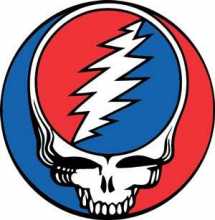
The image that I found was a student project in the Visual arts program designed by Philips Jacoby. His project was based on a calendar in an abstract design.The calendar’s theme were the 12 different types of invented air crafts throughout history. Of these twelve month series, I found September to one of the most appealing months, in both design and subject. The aircraft that was represented in this month is the history of the space race and how Neil Armstrong first landed in space in 1969.
I thought the most compelling thing about the September poster concerning this subject was not just the information I learned but also the design of the subject. In my perspective, the color combination works very well in complementing each other without distracting from each other. The artist uses the orange-red and the blue to show the differences in the aircraft that he describes, but also shows the intensity of the race between them. What also caught my eye concerning this work was the composition, and how each object was laid out in a way where it related but represents its part in historical fact.
The artifacts represented is this poster are space crafts once from the United States and Russia. The American aircraft consists of a rectangular body and cone shaped nose that on the top an antenna is attached in the shape of an arrow. The Russian aircraft on the right very much differs in shape. The top portion of the body has a circular form with two antenna poking out with equal distance from each other. On the bottom of the craft, it is formed as if it were a partially cut diamond shape. Attached to the lower portion of the diamond are four oval antennae, two overlapping each other, the pairs equally apart on one side of the body. Three straight antennae, the shape of an ink pen tip, pokes out from the right ,off center.
The arrangement of the text is what I found to be a plus about this poster. The arrangement of the text is both legible as well as it helps with the movement. Visually, the type arrangement helped with the movement of the text from up to down and back up. White space on this design is not that utilized, but the white space is used to represent the light source and how they are used to create a brightness. Altogether I found that the poster was not only informative for the viewer of a historical moment but also found it is visually attractive with its color combination and the use of light and space to convey the idea and the feeling of outer space and its emptiness.





